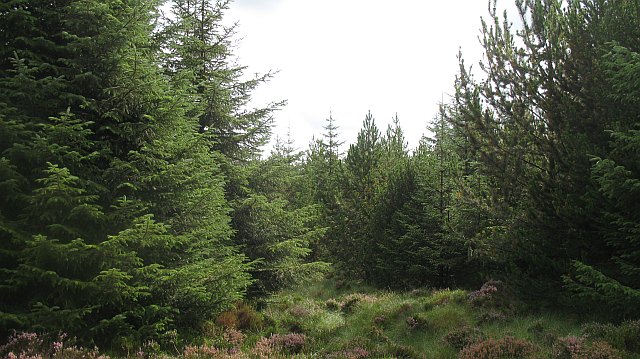Radical changes needed to Ireland's tree-planting policies to improve biodiversity protection

A new study by Noteworthy, the investigative journalism platform of the Journal.ie. explores the continued granted licences for conifer plantations on rich biodiversity areas and valuable peat soil across Ireland.
Ireland was once covered in forests consisting of birch, oak and elm. Years of deforestation led to a mass transformation, resulting in Ireland becoming one of the least forested countries in Europe. Today, approximately 11% of the landmass in Ireland is covered in trees, compared to an EU average of over 30%, but Ireland does have some of the highest rates of forestry plantation in the EU and the largest forested area containing introduced tree species, largely Sitka spruce.
Plans back in the 1950s and 60s focused on planting on what was regarded as marginal land, much of the planting occurred on peatlands and biodiverse areas. There are now several environmental requirements in place for higher biodiversity protection in forestry, including allocated distance from water courses, reserving areas for open spaces and habitat retention and the planting of broadleaves.
This approach to plantation has gained criticism from conservation and community groups in regions with high rates of planting. Data from the Forest Service indicates that Ireland’s forest area consists of over 71% conifers and approximately 29% broadleaves. The findings highlight the dominance of conifer plantations, involving plots of trees of the same age being planted, thinned and then felled after a period of around 30 years and then replanted.
Based on reports from the National Parks and Wildlife Service (NPWS), this style of forestry is regarded as one of the biggest challenges on EU protected habitats, including peatlands, highly diverse grasslands and wetlands.
There are a number of positives that can come out of increasing levels of tree cover in Ireland. A number of industry experts highlighted to media representatives that a shift towards native woodlands and further focus on agroforestry could enhance the biodiversity value of Irish forestry.
The Programme for Government includes plans to incentivise farmers to plant additional woodland on their farms and rewild up to one hectare of the farmland. The plan also includes measures to invest in projects to enhance recreational forestry, including the expansion of the NeighbourWood Scheme. This scheme provides financial assistance to support the development of woodland amenities for local people. Funding is available to support the development of woodland on greenfield sites and enhance the development of existing areas. Neighbourwoods can be used by local communities for walking, family visits, exercising and a number of other outdoor activities.
The State also recently confirmed an ambitious Woodland Creation project intended to incentivise other regions to plant native species on their lands. The proposal has gained interest from several universities and county councils, as well as the ESB, Gas Networks Ireland and Iarnroid Eireann. The State plans to plant 300 hectares per year by 2024 within the project, with a total cost mounting to 15 million euros.
The Galway Mayo Institute of Technology hopes that a movement towards greater biodiversity in our forestry model will create a better opinion of forestry across Ireland. Dr Moran of the GMIT believes that at present the situation is relatively poor in Ireland, with trees being seen as bad for the environment. Dr. Moran explains that Ireland has inherited a legacy from previous generations that simply isn’t working and needs radical action.
All News
